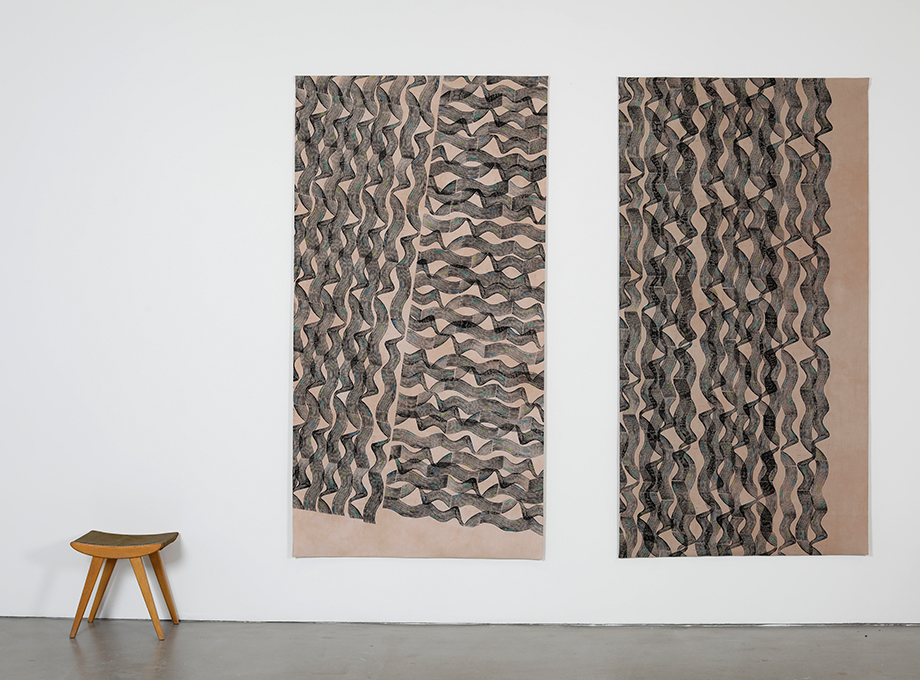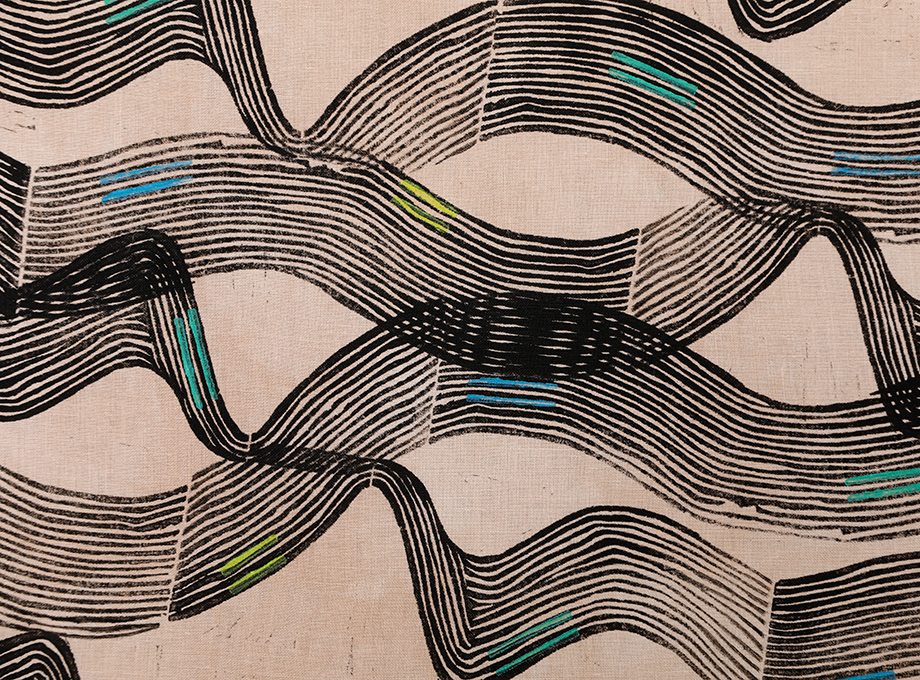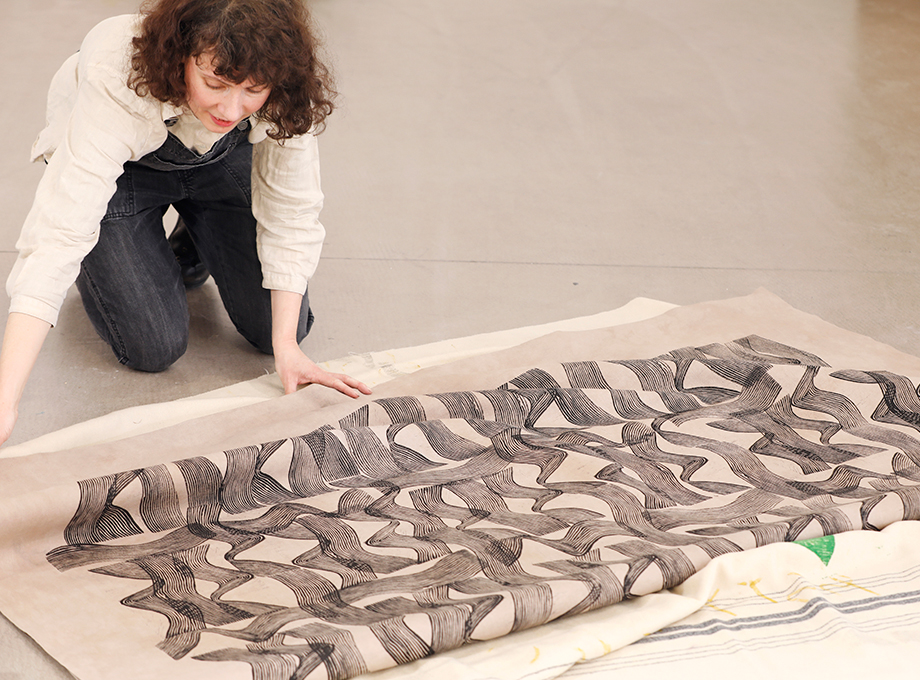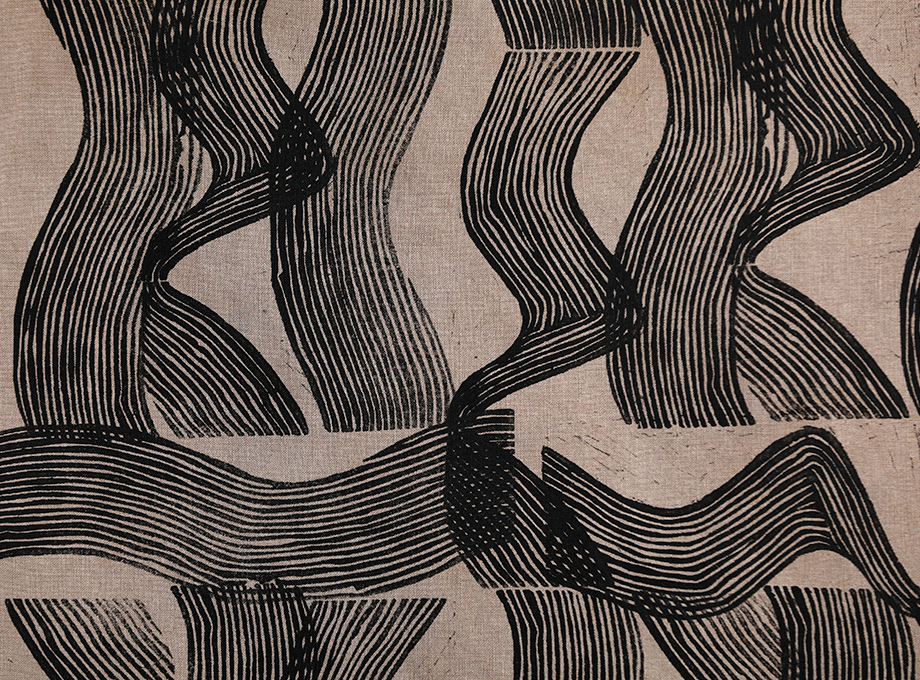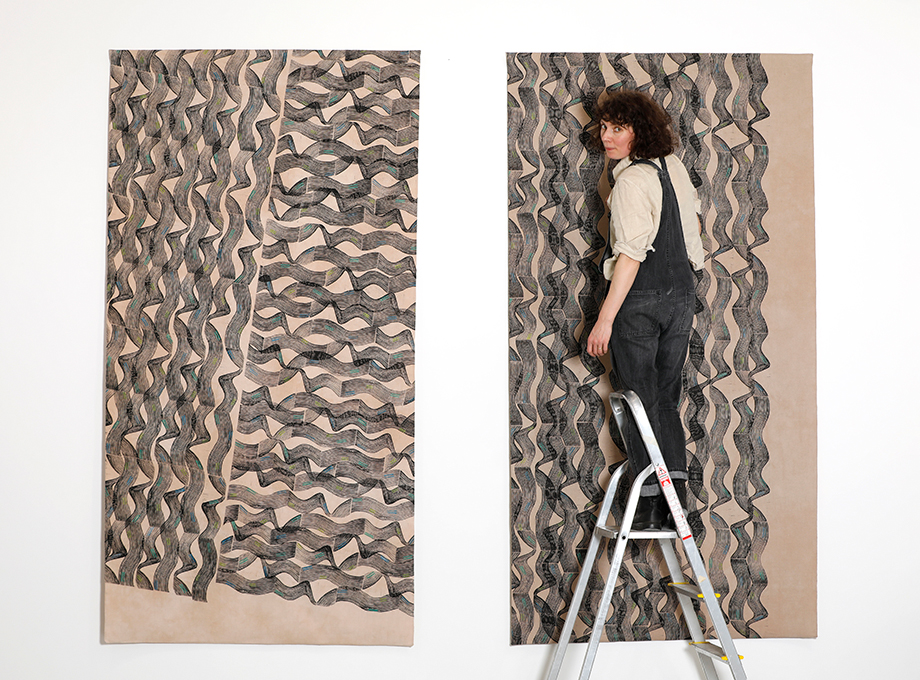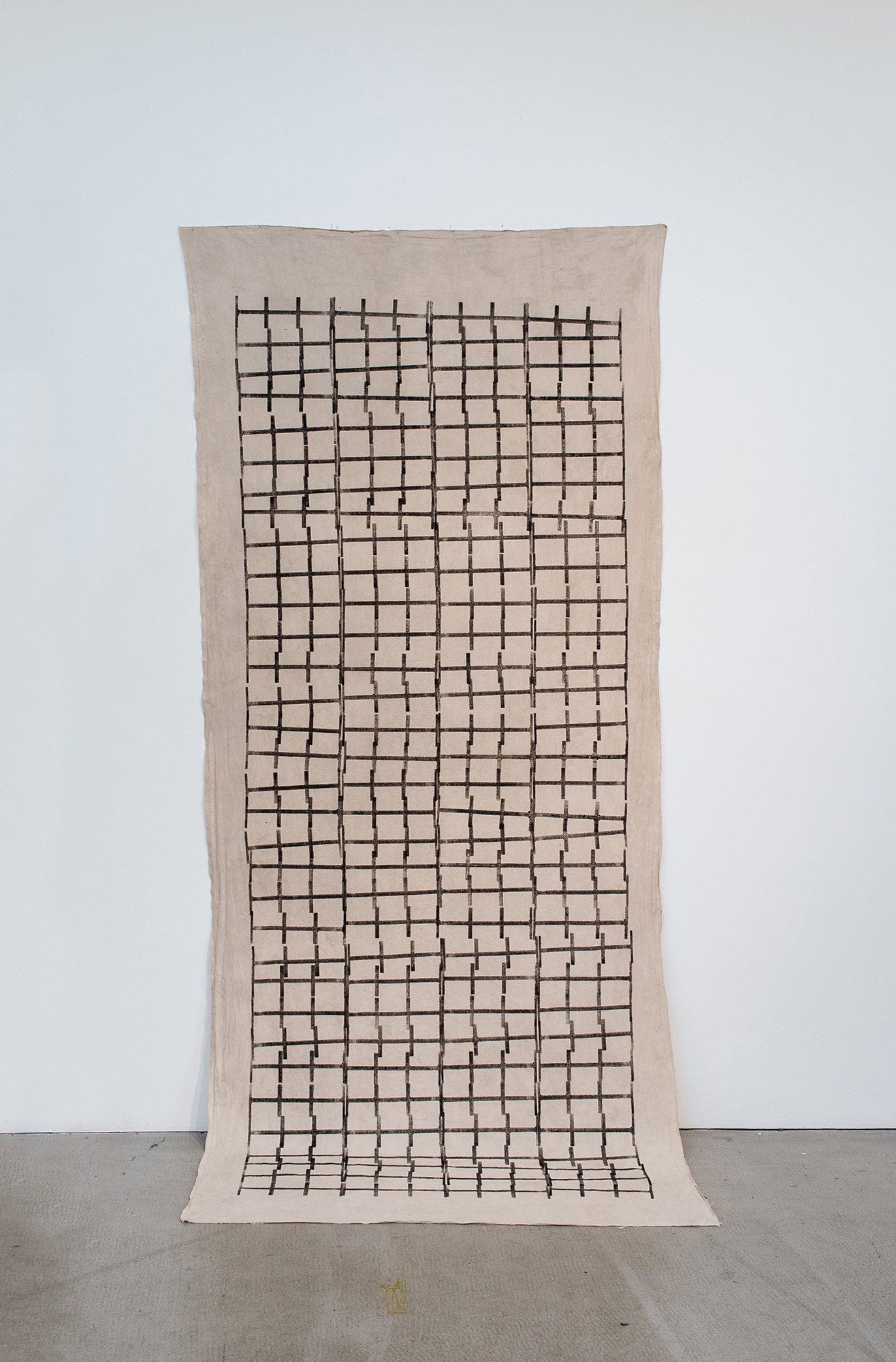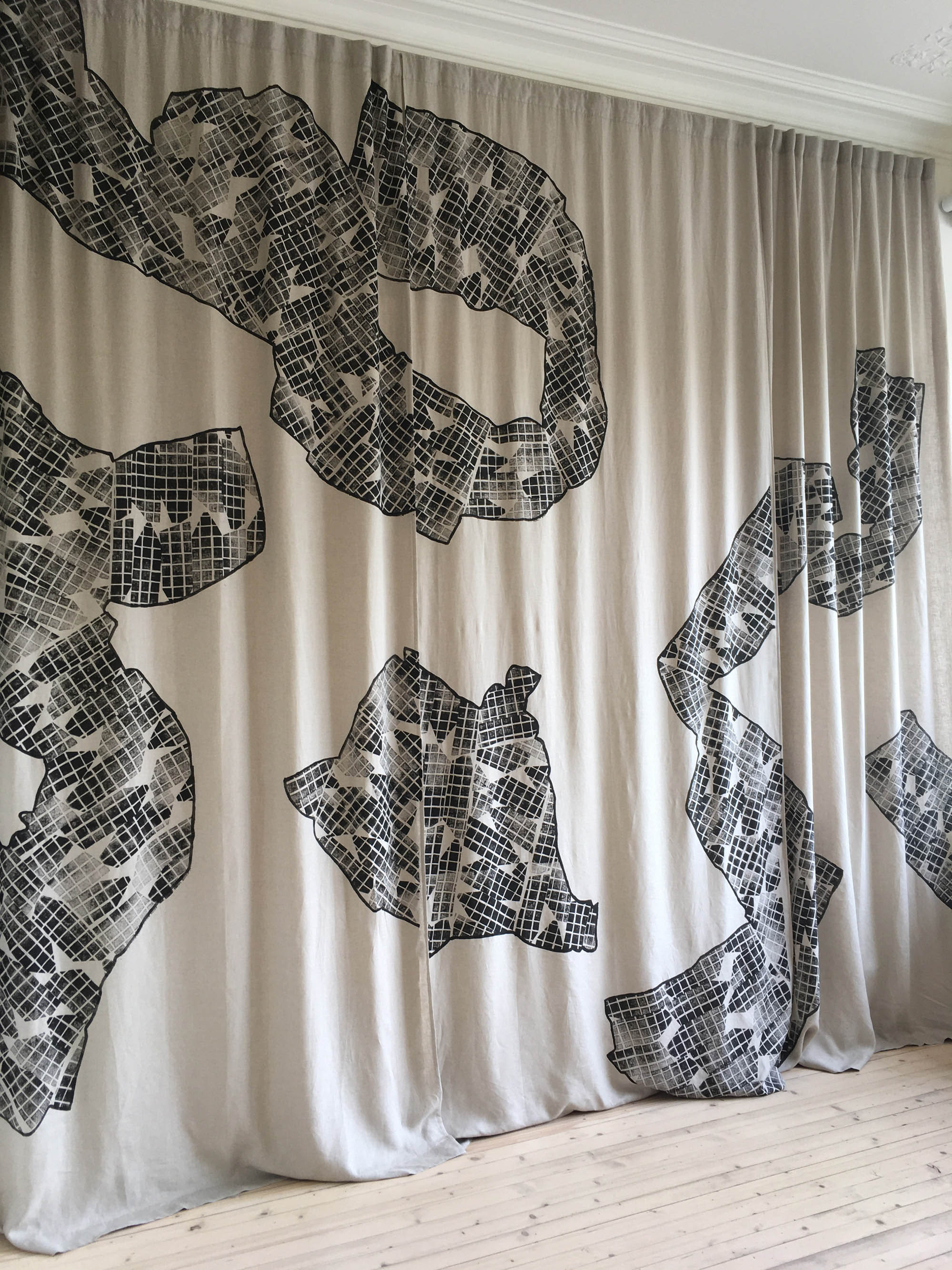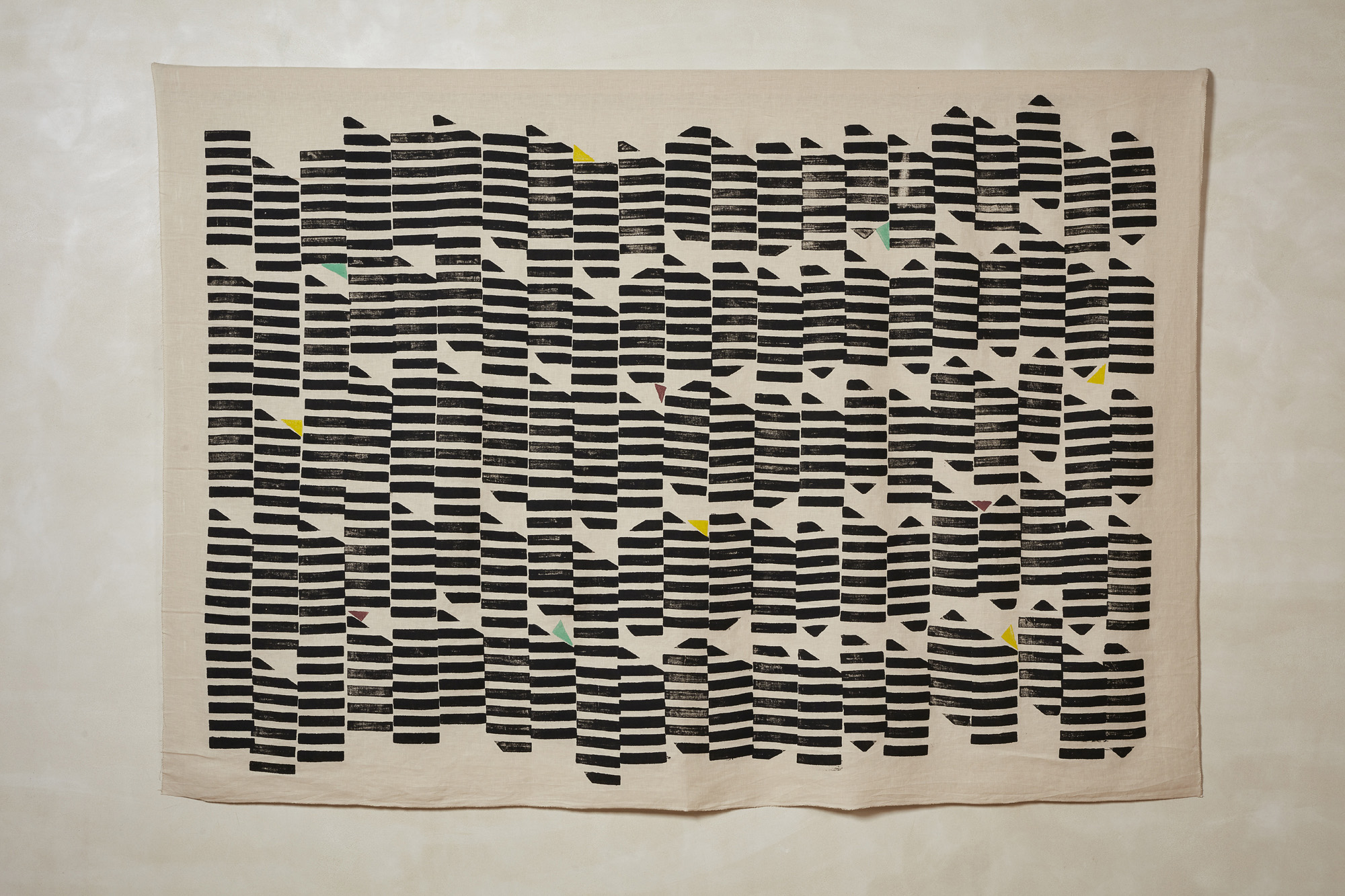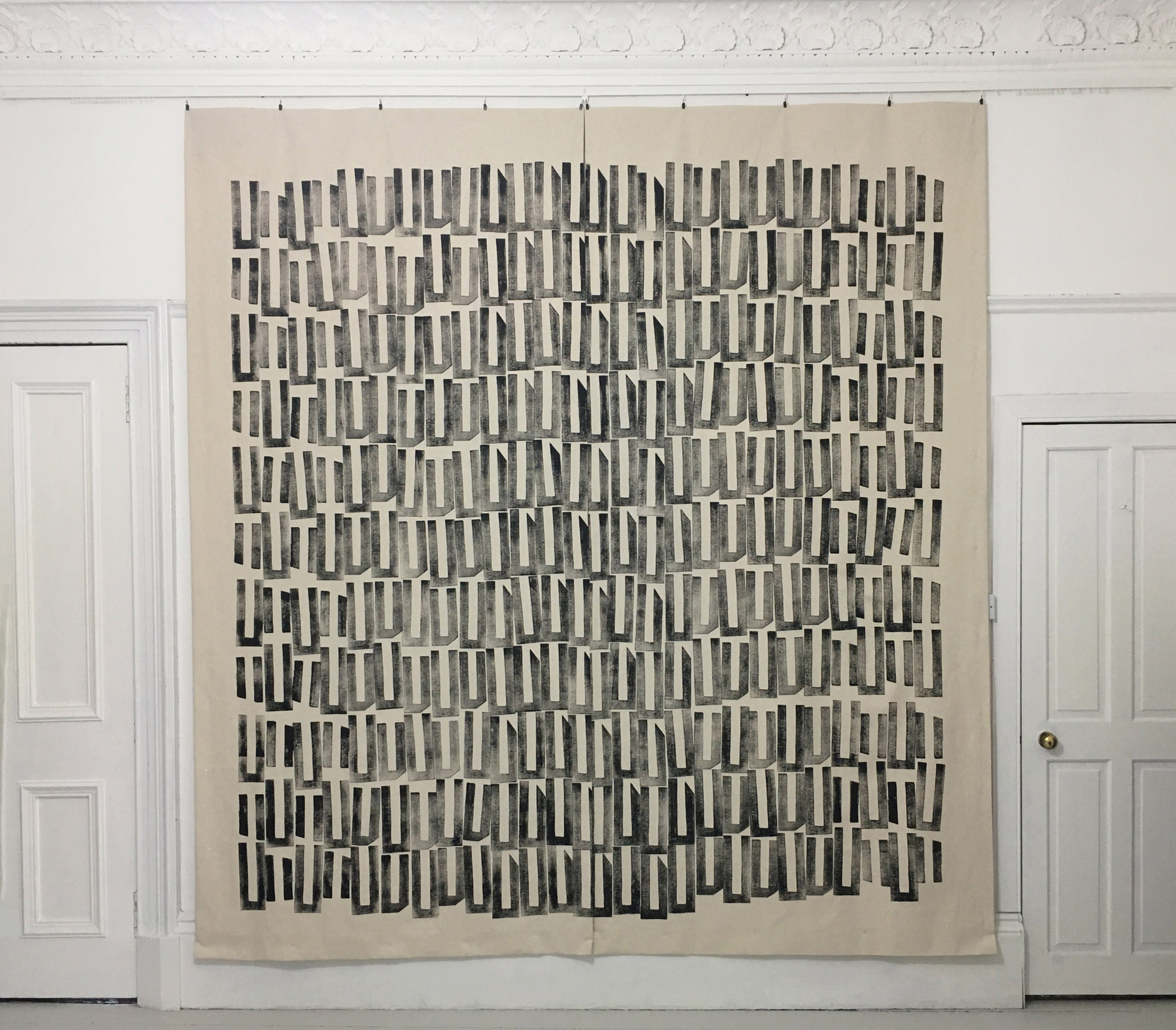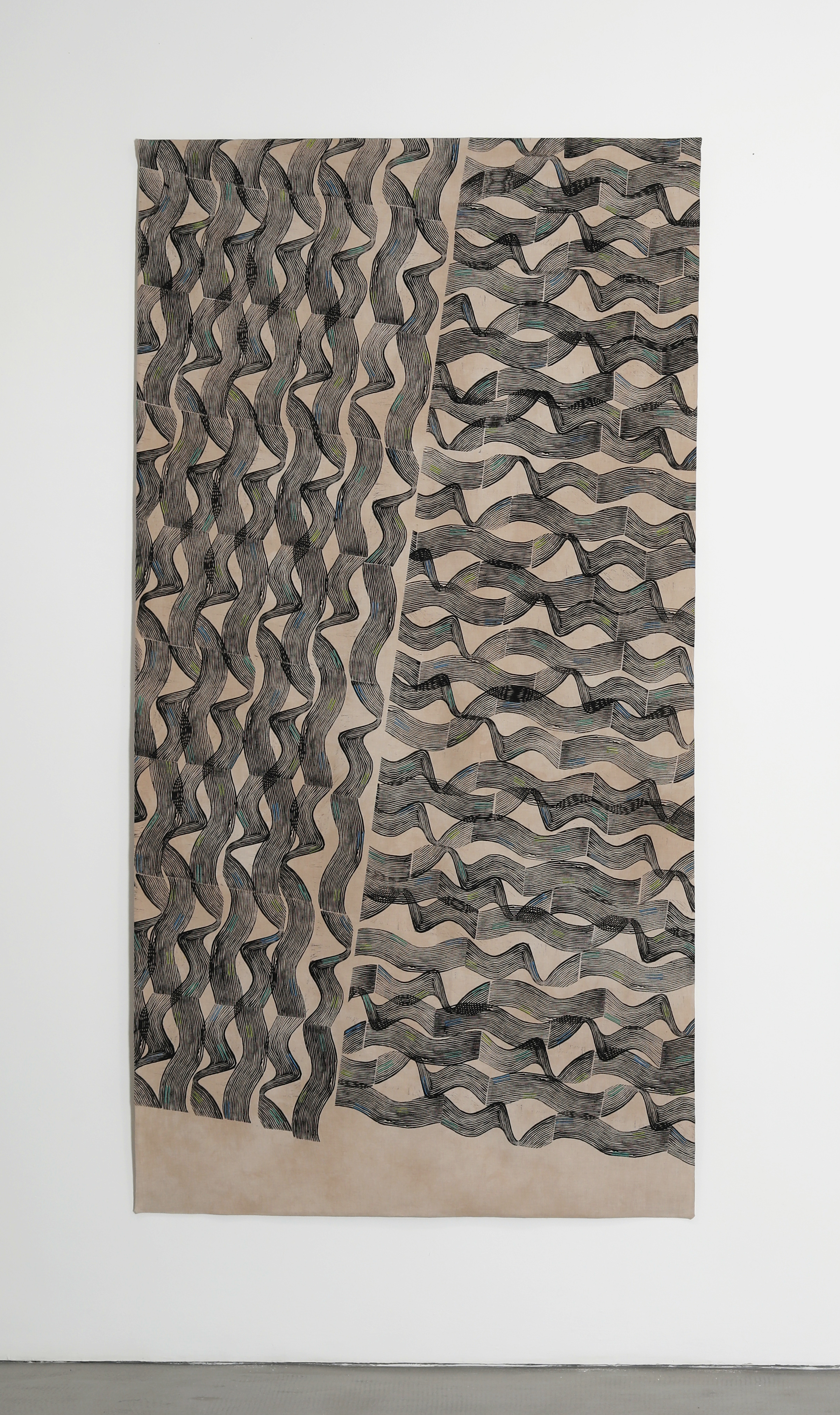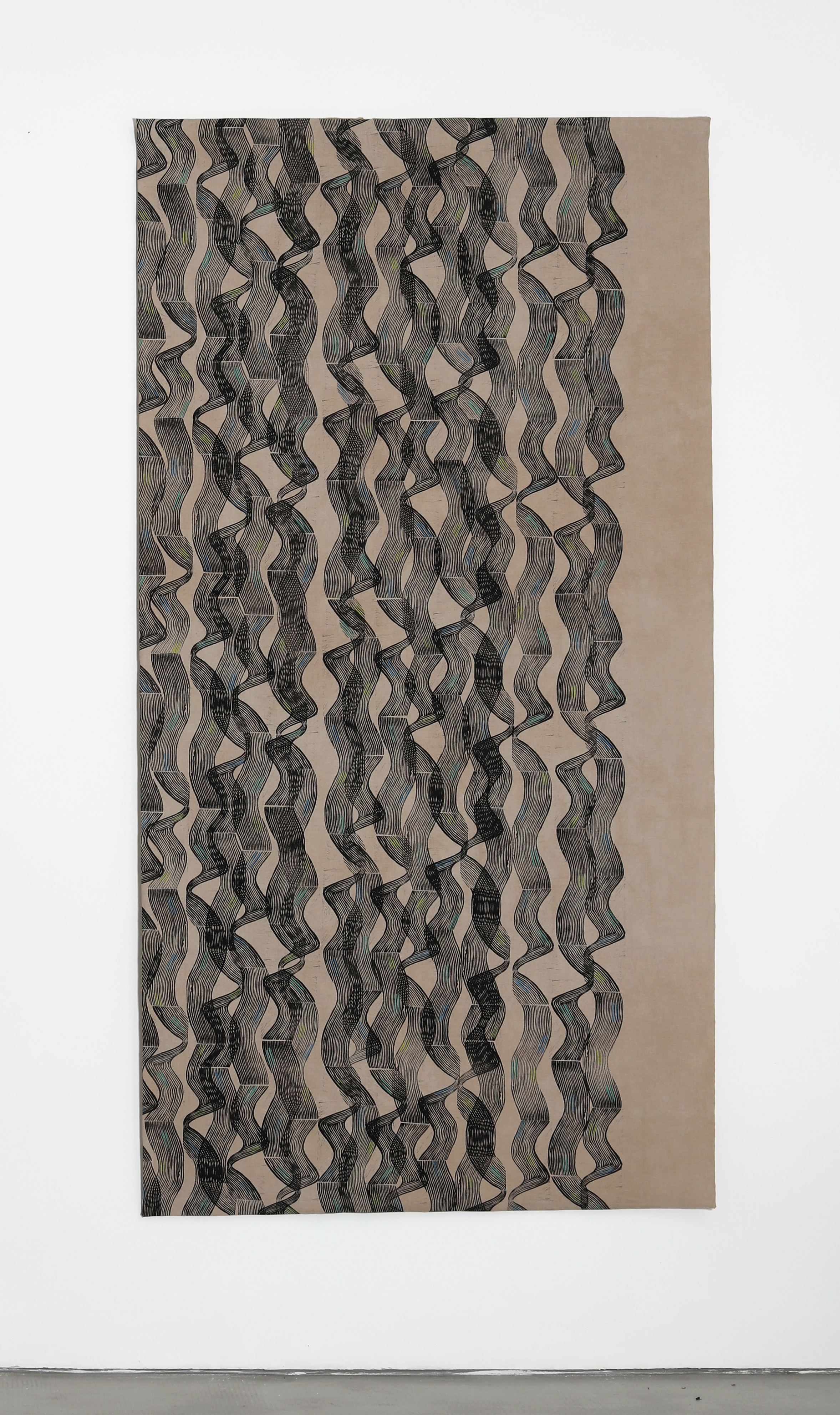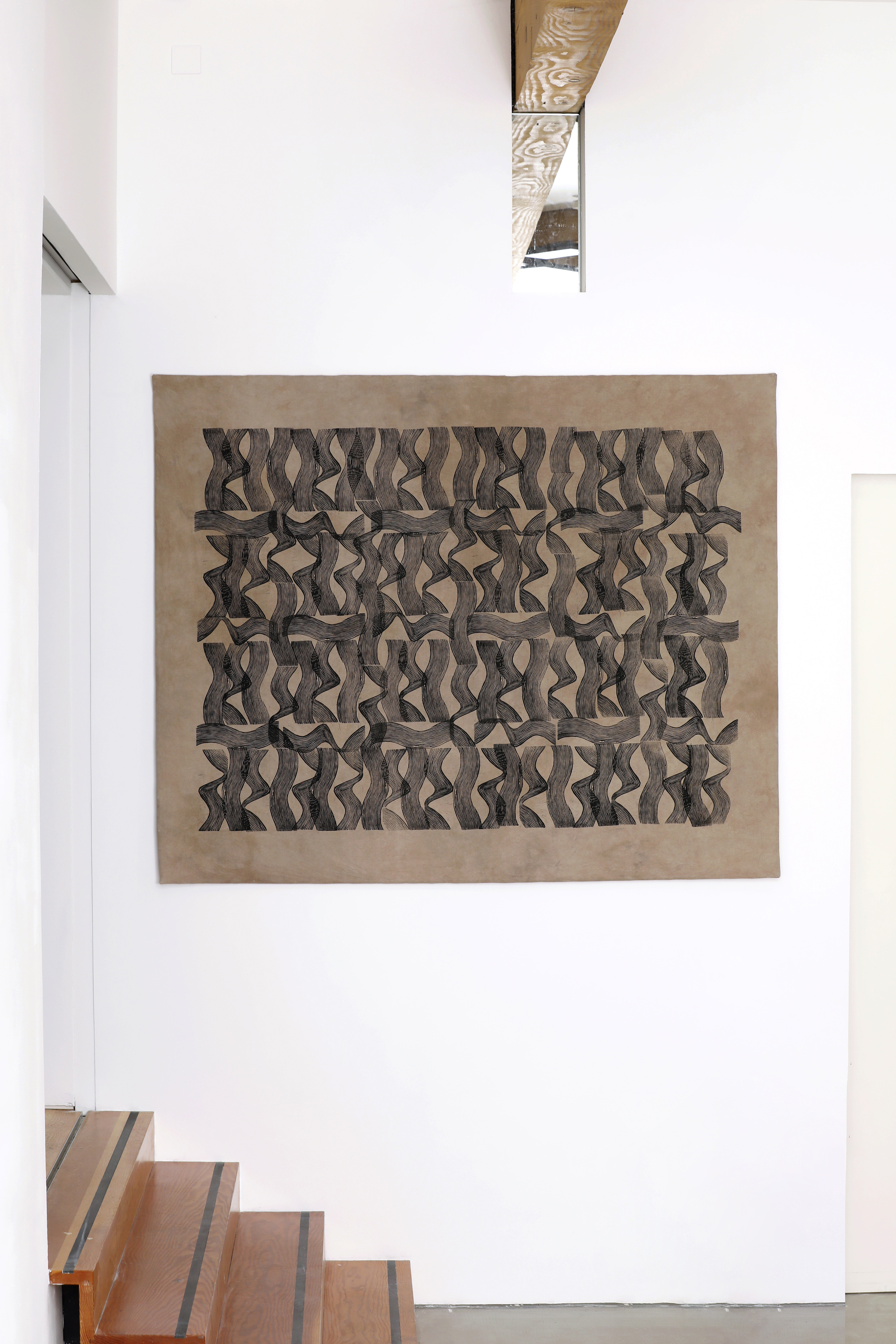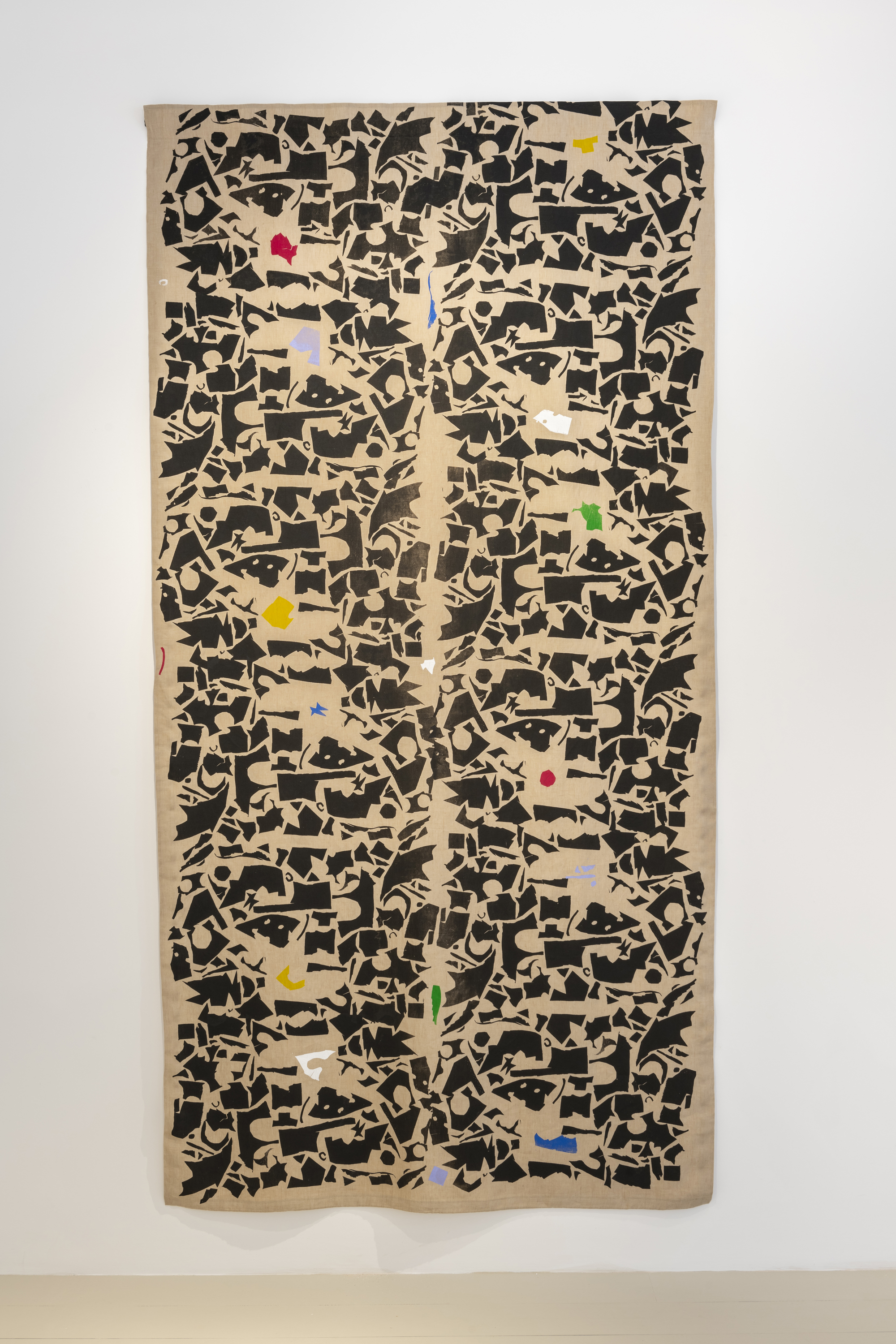1. Tell us about your practice?
My practice has been shaped by a degree in painting, master's in sculpture and an ongoing interest in dance arts. I’ve always worked with printmaking but came to focus on block printing through a commission working with an archive of William Morris blocks in 2013.
My interest in performative movement and a long-term back condition (which prohibits desk-based working) compelled me to develop a print-block-shoe method and use choreography to arrange my designs. My first textile commission was in 2016 using remnants from the UK’s garment industry. This project got me thinking about the ecological impact of materials and I now use Soil Association approved inks, Irish linen and natural dyes.
2. Tell us about your materials and techniques?
I have an unconventional block printing technique which combines print with choreography. My spine has been partially fixed since I was nineteen, prompting me to counter this rigidity with movement in the work.
For the past seven years I’ve used an adapted block printing method in which the print block is replaced with a wooden sandal and motifs are walked across the fabric, using body weight to transfer ink to cloth. Through this way of working, the prints become intimate records of the physical making experience.
3. What inspired the work you are presenting at Collect 2023?
The series of textile hangings I’m showing at Collect are called ‘Creeping Velvet’. I adapted this title from audio accounts recalling velvet ribbon puckering and creeping within Bernat Klein's experimental woven tweeds of the 1960s.
Bernat Klein (1922-2014) was a Serbian/Scottish painter and designer whose groundbreaking designs sold from his base in the Scottish borders to top couture houses in the US and Europe. My print motifs were inspired by a material that refused to conform - the ribbon’s fine fibres causing it to crawl and move of its own accord. I’m interested in moments of looseness and movement as well as creatives who take risks and work across disciplines.
4. Tell us about a special detail from this new body of work?
Bernat Klein drew on landscape and nature in his designs and paintings so I’ve spent the past eight months immersed in my local environment.
I’ve been foraging, chopping, bubbling and brewing plant materials to create the naturally-dyed base fabrics for my hangings. Greens were gathered in Glasgow’s Queens Park, roots were dug from my family's allotment in Edinburgh and tree bark was collected from a neighbour who works as a tree surgeon. I love that these materials come from tangible places in Scotland that the work will forever be tied to.
5. What do you hope the viewer will take away from this work?
I’d love if my work could invoke the sort of kinaesthesia I experience when watching dance but I’m too close to the work to know if that’s possible…
Some visceral feeling is what I hope for. I think there’s a richness to the print and the naturally-dyed colour that’s only there because of the elaborate physical making activities. That’s the sort of thing you can only really appreciate in person and I hope that viewers pick up on the energy of that.
